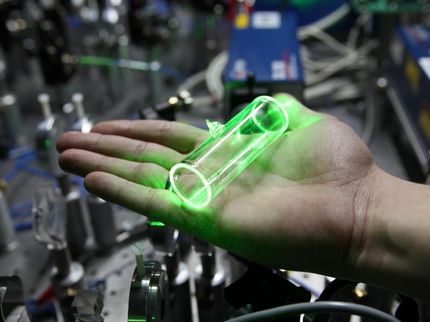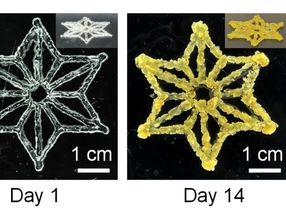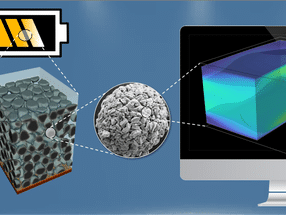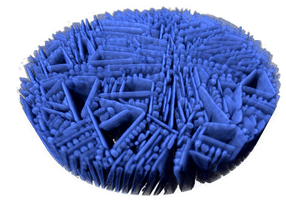Future Computer: Atom Packed in an "Egg Carton" of Light?
Scientists at Ohio State University have taken a step toward the development of powerful new computers -- by making tiny holes that contain nothing at all. The holes -- dark spots in an egg carton-shaped surface of Laser light -- could one day cradle atoms for quantum computing. Worldwide, scientists are racing to develop computers that exploit the quantum mechanical properties of atoms, explained Greg Lafyatis, associate professor of physics at Ohio State . These so-called quantum computers could enable much faster computing than is possible today. One strategy for making quantum computers involves packaging individual atoms on a chip so that laser beams can read quantum data.
Lafyatis and Katharina Christandl recently designed a chip with a top surface of laser light that functions as an array of tiny traps, each of which could potentially hold a single atom. The design could enable quantum data to be read the same way CDs are read today. They've been able to form about a billion gaseous rubidium atoms into a pea-sized cloud with magnetic fields. Now they are working to move that cloud into position above a chip supporting the optical lattice. Theoretically, if they release the atoms above the chip in just the right way, the atoms will fall into the traps.
Other research teams have created similar arrays, called optical lattices, but those designs present problems that could make them hard to use in practice. Other lattices lock atoms into a multi-layered cube floating in free space. But manipulating atoms in the center of the cube would be difficult. The Ohio State lattice has a more practical design, with a single layer of atoms grounded just above a glass chip. Each atom could be manipulated directly with a single laser beam. The lattice forms where two sets of laser beams cross inside a thin transparent coating on the chip. The beams interfere with each other to create a grid of peaks and valleys -- the egg carton-shaped pattern of light.
The physicists expected to see that much when they first modeled their lattice design on computer. But to their surprise, the simulations showed that each valley contained a dark spot, a tiny empty sphere surrounded by electric fields that seemed ideally suited for trapping single atoms and holding them in place, Lafyatis said. In the laboratory, he and Christandl were able to create an optical lattice of light, though the traps are too tiny to see with the naked eye. The next step is to see if the traps actually work as the model predicts. "We're pretty sure we can trap atoms -- the first step towards making a quantum memory chip," Lafyatis said. A working computer based on the design is many years away, though, he cautioned. In fact, Christandl suspects that they are at least two years away from being able to isolate one atom per trap -- the physical arrangement required for a true quantum memory device.
With coauthors Jin-Fa Lee and Seung-Cheol Lee the work is described in the journal Physical Review A.
Most read news
Organizations
Other news from the department science

Get the chemical industry in your inbox
From now on, don't miss a thing: Our newsletter for the chemical industry, analytics, lab technology and process engineering brings you up to date every Tuesday and Thursday. The latest industry news, product highlights and innovations - compact and easy to understand in your inbox. Researched by us so you don't have to.


























































